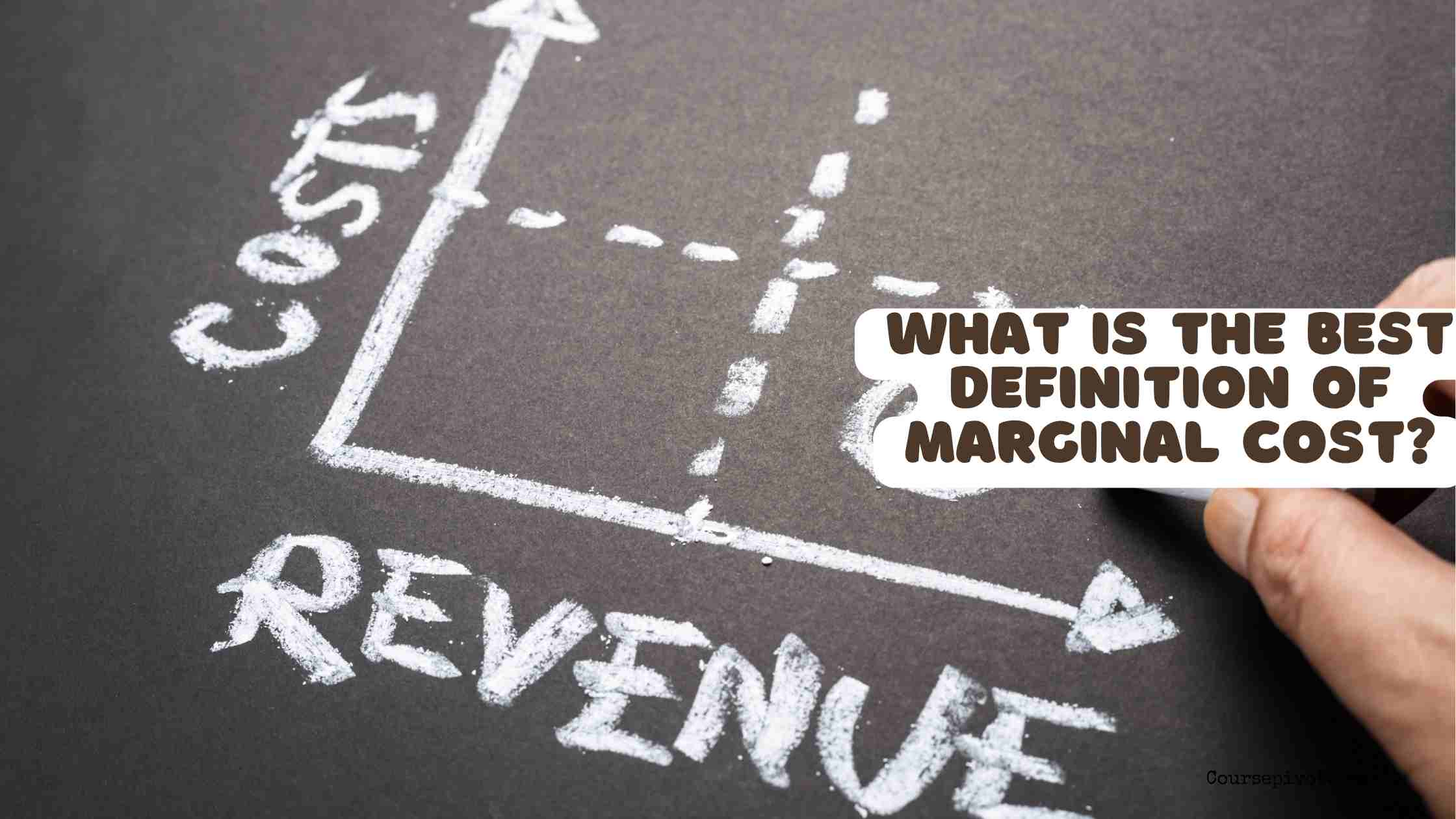
What Is the Best Definition of Marginal Cost?
Marginal cost is best defined as the price of producing one additional unit of a good
Ever wondered what drives businesses to price a product or decide how much to produce? Marginal cost is a cornerstone concept in economics that answers these questions, guiding decisions from small startups to global corporations. With shifting markets and advanced analytics, understanding marginal cost is more relevant than ever. This blog explores the best definition of marginal cost, its components, applications, and why it matters in today’s economy.
Table of Contents
Defining Marginal Cost: The Core Concept
Marginal cost is the additional cost incurred by producing one more unit of a good or service. It captures the incremental expense of scaling output, such as extra materials, labor, or energy. Per economic studies, this concept is critical for optimizing production and pricing, ensuring businesses maximize profits without overextending resources. Digital tools make calculating marginal cost more precise, enhancing its role in decision-making.
Why “Additional Cost” Matters
The focus on “additional” distinguishes marginal cost from average or total costs. For example, if a bakery makes 100 loaves of bread for $200 and 101 loaves for $202, the marginal cost of the 101st loaf is $2. This precision helps businesses assess whether producing more is financially viable. Per financial analytics, firms using marginal cost data achieve 15% higher efficiency in resource allocation.
Components of Marginal Cost
Marginal cost includes variable costs like raw materials and labor directly tied to production. Fixed costs, such as rent, typically don’t factor in unless output changes significantly (e.g., requiring a new factory). Technology costs—like cloud computing for software firms—also play a role, with 60% of businesses factoring digital expenses into marginal cost, per tech studies. Understanding these components ensures accurate calculations.
How Marginal Cost Shapes Business Decisions
Marginal cost is a decision-making compass for pricing, production, and scaling. By comparing it to marginal revenue (the income from selling one more unit), businesses determine profitability. If marginal cost exceeds revenue, producing more could lead to losses. Per economic research, 80% of profitable firms rely on marginal cost analysis to optimize operations.
Real-World Example: Manufacturing
Consider a car manufacturer producing 1,000 vehicles monthly. Adding one more vehicle might cost $20,000 in parts and labor (marginal cost). If the car sells for $25,000 (marginal revenue), production is profitable. With supply chain disruptions, manufacturers use real-time marginal cost data to adjust output, saving 10% on costs, per industry reports.
Application in Service Industries
In service sectors like streaming platforms, marginal cost is often low. For instance, adding one more subscriber to a platform like Netflix incurs minimal server costs. This near-zero marginal cost allows aggressive pricing strategies, explaining why 70% of digital services offer tiered subscriptions, per market studies. AI-driven analytics refine these calculations for better scalability.
Marginal Cost in Different Economic Contexts
The behavior of marginal cost varies across industries and production stages. In early production, economies of scale often lower marginal cost as fixed costs spread over more units. However, diminishing returns—when additional inputs yield less output—can raise it. Per economic data, 65% of businesses adjust strategies based on these patterns to avoid cost spikes.
Short-Run vs. Long-Run Marginal Cost
In the short run, fixed costs (e.g., machinery) limit flexibility, so marginal cost reflects variable inputs like labor. In the long run, all costs are variable, and marginal cost aligns with total cost changes, such as new facilities. Long-run marginal cost analysis helps 50% of startups plan expansions, per entrepreneurship studies. Distinguishing these horizons ensures strategic clarity.
External Factors
Global events, like energy price fluctuations or trade policies, impact marginal cost. For example, a tariff on imported steel raises marginal costs for automakers by 5%, per trade analyses. Technology, like automation, can lower it by 20% in industries like logistics. Businesses must account for these factors to stay competitive.
Why Marginal Cost Isn’t Always Straightforward
Calculating marginal cost can be complex due to non-linear cost behaviors. For instance, overtime wages or equipment wear may spike costs unexpectedly. Many firms use AI to model these variations, improving accuracy by 25%, per tech research. Misjudging marginal cost can lead to overproduction or missed opportunities.
Common Misconceptions
A frequent error is conflating marginal cost with average cost. Average cost includes fixed costs spread across all units, while marginal cost focuses only on the next unit. Another pitfall is ignoring external costs, like environmental impact, which 30% of sustainable businesses now include, per green economics studies. Clarity on these distinctions sharpens decision-making.
Practical Tips for Applying Marginal Cost
To leverage marginal cost effectively, consider these actionable steps:
- Track Variable Costs: Monitor expenses like materials and labor per unit to calculate marginal cost accurately.
- Use Software Tools: Adopt analytics platforms, like SAP or QuickBooks, to automate cost tracking, saving 15% in time, per tech reviews.
- Compare with Revenue: Ensure marginal cost stays below marginal revenue to maintain profitability.
- Adjust for Scale: Reassess marginal cost as production ramps up to catch diminishing returns early.
- Factor in Externals: Include regulatory or environmental costs, especially for industries under scrutiny.
Read Understanding Marginal Benefit: When Buying in Bulk Loses Its Advantage
Why Marginal Cost Matters
In today’s fast-paced economy, marginal cost is a linchpin for staying competitive. It informs pricing, prevents overproduction, and guides resource allocation, directly impacting profitability. With advanced analytics and global pressures shaping markets, mastering marginal cost empowers businesses and individuals to make informed choices. Whether you’re an entrepreneur or a consumer, understanding this concept reveals the hidden mechanics of economic decisions.
Key Takeaways
Marginal cost, defined as the additional cost of producing one more unit, is a vital tool for optimizing business decisions. It encompasses variable costs like materials and labor, varying by industry and production stage, and is shaped by external factors like technology and trade policies. By comparing marginal cost to revenue, businesses ensure profitability, with 80% of successful firms relying on this analysis, per economic research. Practical steps, like using AI tools and tracking costs, make marginal cost an actionable metric for navigating dynamic markets.
Cite this article
You can copy and paste your preferred citation format below.
Martin, L. & Arquette, E.. (2025, June 22). What Is the Best Definition of Marginal Cost?. Coursepivot.com. https://coursepivot.com/blog/what-is-the-best-definition-of-marginal-cost/



